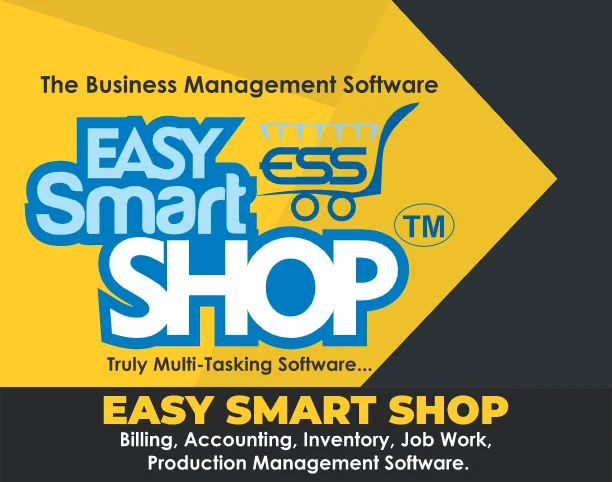The Benefits of Using Billing Software for Business Management
In today’s fast-paced business world, efficient management of finances and operations is crucial for the success and growth of any organization. One key aspect of business management that requires careful attention is billing. Accurate and timely billing is essential for maintaining cash flow, managing expenses, and ensuring customer satisfaction. That’s where billing software comes in.
What is Billing Software?
Billing software is a tool designed to automate and streamline the billing process for businesses. It enables organizations to generate invoices, track payments, manage expenses, and generate financial reports with ease. With its user-friendly interface and advanced features, billing software simplifies the complex task of managing financial transactions.
The Benefits of Using Billing Software
1. Time and Cost Savings: Manual billing processes can be time-consuming and prone to errors. Billing software automates the entire billing process, saving time and reducing the risk of mistakes. It eliminates the need for manual calculations, data entry, and printing of invoices, resulting in significant cost savings for businesses.
2. Improved Accuracy: Billing software ensures accurate and error-free invoicing. It calculates taxes, discounts, and other charges automatically, reducing the risk of human errors. With real-time data updates, businesses can have a clear view of their financial status and make informed decisions based on accurate information.
3. Streamlined Workflow: Billing software streamlines the entire billing workflow, from generating invoices to tracking payments and managing overdue accounts. It provides a centralized platform for managing customer information, payment history, and outstanding balances. This streamlines communication with clients and enhances customer service.
4. Customization and Flexibility: Billing software allows businesses to customize invoices according to their branding and specific requirements. It offers various templates and design options to create professional-looking invoices. Additionally, it provides flexibility in terms of payment methods, allowing businesses to accept online payments, credit cards, and other payment options.
5. Financial Insights and Reporting: Billing software generates detailed financial reports that provide valuable insights into the financial health of the business. These reports include sales summaries, payment history, revenue forecasts, and more. Having access to such data helps businesses make informed decisions and identify areas for improvement.
Choosing the Right Billing Software
When selecting billing software for your business, consider the following factors:
1. Features and Functionality: Look for software that offers the necessary features to meet your billing requirements. Consider factors such as invoice customization, recurring billing options, and integration with other business tools.
2. Scalability: Choose billing software that can grow with your business. It should be able to handle increasing volumes of invoices and transactions as your business expands.
3. User-Friendliness: The software should have an intuitive interface that is easy to navigate and use. This will ensure that your team can quickly adapt to the new system without extensive training.
4. Security: Ensure that the billing software has robust security measures in place to protect sensitive financial data. Look for features like data encryption and regular backups.
5. Customer Support: Consider the level of customer support provided by the software vendor. It is essential to have access to technical assistance and troubleshooting when needed.
In Conclusion
Billing software is a valuable tool for businesses of all sizes. It simplifies the billing process, improves accuracy, and provides valuable financial insights. By choosing the right billing software, businesses can streamline their operations, save time and costs, and enhance customer satisfaction. Invest in billing software today and take your business management to the next level.
Understanding Purchase Invoices and the Purchase Process
When it comes to business transactions, the term “purchase” is commonly used to refer to the act of acquiring goods or services in exchange for payment. In this context, a purchase invoice plays a crucial role in documenting the details of a purchase and ensuring proper record-keeping.
What is a Purchase Invoice?
A purchase invoice, also known as a supplier invoice or vendor invoice, is a document provided by a seller to a buyer that outlines the details of a purchase transaction. It serves as evidence of the agreement between the buyer and the seller, including the items purchased, quantities, prices, payment terms, and any applicable taxes or discounts.
The purchase invoice is typically generated by the seller and sent to the buyer after the goods or services have been delivered or rendered. It is an important piece of documentation for both parties involved, as it helps facilitate accurate bookkeeping, inventory management, and financial reporting.
The Purchase Process
The purchase process encompasses the series of steps involved in acquiring goods or services for a business. While the specific steps may vary depending on the organization and industry, the general process typically includes the following:
- Identifying the Need: The first step in the purchase process is identifying the need for a particular product or service. This could be prompted by factors such as inventory depletion, new project requirements, or customer demand.
- Supplier Selection: Once the need is identified, the next step is to select a suitable supplier. This involves evaluating factors such as price, quality, reliability, and delivery terms.
- Negotiation and Purchase Order: After selecting a supplier, the buyer may engage in negotiations to agree on the terms of the purchase, including price, quantity, delivery schedule, and payment terms. Once the terms are finalized, a purchase order is typically issued to the supplier.
- Goods or Services Delivery: The supplier then delivers the goods or provides the agreed-upon services to the buyer. This step may involve physical shipment, digital delivery, or on-site service provision.
- Receipt and Inspection: Upon receiving the goods or services, the buyer inspects them to ensure they meet the agreed-upon specifications and quality standards. Any discrepancies or issues are typically communicated to the supplier for resolution.
- Invoice and Payment: Once the buyer is satisfied with the received goods or services, the supplier issues a purchase invoice. The buyer then processes the invoice, verifies its accuracy, and proceeds with the payment according to the agreed-upon terms.
- Record-Keeping and Reconciliation: Both the buyer and the seller maintain records of the purchase transaction for accounting and reconciliation purposes. This includes keeping copies of the purchase invoice, purchase order, payment receipts, and any related correspondence.
Benefits of Purchase Invoices
Purchase invoices offer several benefits to businesses, including:
- Accurate Financial Reporting: Purchase invoices provide detailed information about the expenses incurred by a business, allowing for accurate financial reporting and analysis.
- Audit Trail: Purchase invoices serve as an audit trail, documenting the flow of goods and services between the buyer and the seller.
- Inventory Management: Purchase invoices help businesses keep track of their inventory levels by providing information on the quantity and cost of goods purchased.
- Tax Compliance: Purchase invoices include details of any applicable taxes, helping businesses ensure compliance with tax regulations and facilitating the claiming of input tax credits.
- Dispute Resolution: In the event of a dispute or discrepancy, purchase invoices provide a clear reference point for resolving issues between the buyer and the seller.
Conclusion
Purchase invoices play a vital role in the purchase process, documenting the details of a transaction and facilitating accurate record-keeping. Understanding the purchase process and the importance of purchase invoices can help businesses maintain efficient operations, financial transparency, and compliance with regulatory requirements.
GST Software: Streamlining Your Tax Compliance
Managing taxes can be a complex and time-consuming task for businesses. With the implementation of the Goods and Services Tax (GST) in many countries, businesses are required to accurately calculate and report their tax liabilities. This is where GST software comes into play. In this article, we will explore the benefits of using GST software and how it can streamline your tax compliance process.
What is GST Software?
GST software is a digital tool designed to help businesses comply with the requirements of the Goods and Services Tax. It automates various aspects of tax management, including tax calculation, invoice generation, return filing, and reconciliation. GST software simplifies the entire tax compliance process, making it easier for businesses to meet their tax obligations.
Benefits of Using GST Software
1. Accuracy and Efficiency: GST software eliminates the need for manual calculations, reducing the chances of errors. It automates tax calculations based on the GST rates and rules applicable to your business. This ensures accurate tax calculations and reduces the risk of penalties due to incorrect reporting.
2. Time-saving: GST software automates various tasks, such as invoice generation and return filing. This saves businesses significant time and effort that would otherwise be spent on manual paperwork. With GST software, businesses can focus on their core operations and leave the tax compliance to the software.
3. Real-time Updates: GST rules and rates are subject to frequent changes. GST software keeps businesses updated with the latest changes, ensuring compliance with the current regulations. This eliminates the need for businesses to manually track and implement these updates, saving time and reducing the risk of non-compliance.
4. Improved Data Management: GST software stores all tax-related data in a centralized database. This allows businesses to easily access and retrieve the necessary information during audits or when filing returns. Additionally, GST software provides reports and analytics that help businesses gain insights into their tax liabilities and make informed decisions.
5. Integration with Accounting Systems: Many GST software solutions integrate seamlessly with accounting systems. This enables businesses to streamline their tax and accounting processes, eliminating the need for duplicate data entry. Integration with accounting systems ensures accurate and consistent financial records.
Choosing the Right GST Software
When selecting GST software for your business, consider the following factors:
1. Features: Look for software that offers the features you need, such as tax calculation, invoice generation, return filing, and reconciliation. Consider whether the software can handle the specific requirements of your industry.
2. Scalability: Ensure that the software can accommodate your business’s growth. It should be able to handle an increasing number of transactions and adapt to any changes in tax regulations.
3. User-Friendliness: Choose software that is intuitive and easy to use. A user-friendly interface will reduce the learning curve for your employees and make the transition to GST software smoother.
4. Customer Support: Check if the software provider offers reliable customer support. In case of any issues or questions, prompt assistance can save you time and ensure smooth operations.
Conclusion
GST software is a valuable tool for businesses to streamline their tax compliance process. It offers accuracy, efficiency, time-saving, and improved data management. By choosing the right GST software, businesses can simplify their tax obligations and focus on their core operations. Embrace the power of technology and make tax compliance a hassle-free experience with GST software.
Cash Management: Effective Strategies for Store Cash and Bank Handling
Cash management is a crucial aspect of running a successful business, especially when it comes to handling store cash and bank transactions. Proper cash management practices can help improve financial stability, prevent theft, and optimize cash flow. In this blog post, we will discuss effective strategies for managing store cash and bank transactions.
1. Cash Handling Procedures
Establishing clear and consistent cash handling procedures is essential for minimizing the risk of errors and theft. Develop a comprehensive cash handling policy that outlines the steps employees should follow when processing cash transactions. This policy should include guidelines for opening and closing cash registers, handling cash deposits, and conducting cash audits.
2. Cash Reconciliation
Regular cash reconciliation is crucial to ensure that the cash in your store matches the recorded transactions. Implement a system for reconciling cash at the end of each shift or day. This involves comparing the actual cash on hand with the expected cash based on sales records. Any discrepancies should be investigated and resolved promptly.
3. Cash Register Security
Protecting your cash registers from theft is essential. Train your employees on the importance of cash register security and implement measures to prevent unauthorized access. This can include assigning unique login credentials to each employee, limiting access to the cash register area, and installing surveillance cameras to deter theft.
4. Cash Float Management
Managing the cash float effectively is crucial for maintaining adequate change for transactions. Regularly monitor the cash levels in each cash register and replenish the float as needed. By ensuring that each register has sufficient change, you can minimize delays at the point of sale and improve customer satisfaction.
5. Cash Deposits
Regularly depositing cash into your bank account is essential for minimizing the risk of theft and maximizing the security of your funds. Establish a schedule for cash deposits based on the volume of cash transactions in your store. Consider using a secure cash transportation service to minimize the risk associated with transporting cash to the bank.
6. Cash Handling Training
Properly training your employees on cash handling procedures is crucial for minimizing errors and preventing theft. Conduct regular training sessions to educate your staff on the importance of accurate cash handling, recognizing counterfeit money, and following security protocols. By investing in comprehensive training, you can build a team that is knowledgeable and vigilant when it comes to cash management.
7. Cash Flow Forecasting
Developing a cash flow forecast can help you anticipate and plan for future cash needs. By analyzing historical cash flow data and considering upcoming expenses and revenue, you can identify potential cash shortages or surpluses. This allows you to make informed decisions and take proactive measures to optimize your cash flow.
8. Cash Handling Technology
Consider leveraging cash handling technology to streamline your cash management processes. Cash counting machines, smart safes, and automated cash handling systems can help reduce human error, improve efficiency, and enhance security. Evaluate the available options and choose the technology that best fits your business needs and budget.
9. Regular Cash Audits
Conducting regular cash audits is crucial for detecting and preventing cash theft and errors. Schedule periodic audits to verify the accuracy of your cash handling procedures and identify any discrepancies. This will help you identify weaknesses in your cash management processes and take corrective actions.
10. Cash Management Policies
Developing and implementing comprehensive cash management policies is essential for maintaining financial control and minimizing risk. Review and update your policies regularly to ensure they align with current best practices and industry standards. Communicate these policies to your employees and enforce them consistently to maintain a secure cash management environment.
In conclusion, effective cash management is vital for any business, especially when it comes to handling store cash and bank transactions. By implementing the strategies mentioned above, you can optimize your cash flow, prevent theft, and ensure the financial stability of your business.
Inventory Management: Understanding the Basics of Inventory
When it comes to running a successful business, effective inventory management is crucial. But what exactly is inventory? In simple terms, inventory refers to the goods and materials that a company holds for production, sales, or any other purpose related to its operations. It can include raw materials, work-in-progress items, finished products, and even supplies needed for day-to-day operations.
Why is Inventory Management Important?
Inventory management plays a vital role in the overall success of a business. Here are a few reasons why it is important:
- Meeting customer demands: By having the right amount of inventory on hand, businesses can fulfill customer orders promptly and efficiently. This helps in maintaining customer satisfaction and loyalty.
- Reducing costs: Proper inventory management helps in minimizing costs associated with holding excess inventory or stockouts. It allows businesses to optimize their inventory levels and avoid unnecessary expenses.
- Optimizing production: With effective inventory management, businesses can ensure that they have the necessary raw materials and components to maintain a smooth production process. This prevents delays and disruptions.
- Forecasting and planning: By analyzing inventory data, businesses can make informed decisions regarding future production, sales, and procurement. This helps in creating accurate forecasts and efficient planning.
Key Elements of Inventory Management
Inventory management involves various elements that work together to ensure efficient control and utilization of inventory. Here are some key elements:
Inventory Tracking
Accurate inventory tracking is essential for effective management. This involves keeping a record of all incoming and outgoing items, including quantities, dates, and locations. Inventory tracking can be done manually or by using specialized software or systems.
Inventory Classification
Inventory classification helps in categorizing items based on their value, demand, and other factors. This allows businesses to prioritize their inventory management efforts and allocate resources accordingly. Common classification methods include ABC analysis, where items are classified as A, B, or C based on their importance and value.
Inventory Replenishment
Inventory replenishment involves determining when and how much inventory needs to be ordered to maintain optimal stock levels. This is often based on factors such as lead time, demand forecasting, and reorder points. Implementing efficient replenishment strategies helps businesses avoid stockouts and excess inventory.
Inventory Optimization
Inventory optimization focuses on finding the right balance between inventory levels and customer demand. It involves analyzing data and using various techniques, such as economic order quantity (EOQ) and just-in-time (JIT) inventory management, to minimize costs while meeting customer needs.
Benefits of Effective Inventory Management
Implementing effective inventory management practices can bring several benefits to a business:
- Improved cash flow: By minimizing excess inventory and optimizing stock levels, businesses can free up cash that would otherwise be tied up in inventory.
- Reduced holding costs: Holding excess inventory can lead to additional costs such as storage, insurance, and obsolescence. Effective inventory management helps in reducing these costs.
- Enhanced customer satisfaction: With the right inventory levels, businesses can fulfill customer orders promptly, leading to higher customer satisfaction and repeat business.
- Increased operational efficiency: Efficient inventory management streamlines production, reduces lead times, and minimizes disruptions, resulting in improved operational efficiency.
Conclusion
Inventory management is a critical aspect of running a successful business. By understanding what inventory is and implementing effective inventory management practices, businesses can improve customer satisfaction, reduce costs, and optimize their operations. With the right balance of inventory levels, businesses can stay competitive and thrive in today’s dynamic market.
Happy Republic Day गणराज्य दिनाच्या हार्दिक शुभेच्छा.
Republic Day Of India : यंदा भारत देश आपला ७५ वा प्रजासत्ताक दिन साजरा करणार आहे. २६ जानेवारी हा प्रत्येक भारतीयासाठी खूप खास आणि महत्त्वाचा दिवस आहे. हा दिवस लोकशाही पद्धतीने आपले सरकार निवडण्याची भारतीय नागरिकांची शक्ती प्रतिबिंबित करतो. भारताच्या इतिहासात हा दिवस अनेक अर्थाने महत्त्वाचा आहे. त्यामुळेच हा दिवस देशभरात आनंदात आणि उत्साहात साजरा केला जातो. या राष्ट्रीय सणाचे वेगळे वैशिष्ट्य आहे, त्यामुळे लोक मोठ्या थाटामाटात हा सण साजरा करतात. पण, तुम्हाला माहित आहे का भारतात प्रजासत्ताक दिन २६ जानेवारीलाच का साजरा केला जातो. हा प्रश्न तुमच्याही मनात निर्माण होत असेल, तर आज आम्ही तुम्हाला प्रजासत्ताक दिनाचा इतिहास आणि त्याचे महत्त्व सांगणार आहोत.
खरे पाहता, प्रजासत्ताक दिन दरवर्षी २६ जानेवारी रोजी साजरा केला जातो. या दिवशी संपूर्ण देशात संविधान लागू करण्यात आले. २६ जानेवारी १९५० रोजी संविधान लागू होऊन भारताला पूर्ण प्रजासत्ताक घोषित करण्यात आले. त्यामुळेच या खास दिवसाच्या स्मरणार्थ दरवर्षी २६ जानेवारीला प्रजासत्ताक दिन साजरा केला जातो. सन १९४७ मध्ये भारताला स्वातंत्र्य मिळाल्यानंतर देशाची राज्यघटना लोकशाही बनवण्याच्या उद्देशाने तयार करण्याचे काम सुरू झाले. २ वर्षे, ११ महिने आणि १८ दिवसांत तयार झालेले भारताचे संविधान २६ नोव्हेंबर १९४९ रोजी देशाच्या संविधान सभेने स्वीकारले. त्यानंतर पुढच्याच वर्षी २६ जानेवारी १९५० रोजी संपूर्ण देशात ही राज्यघटना लागू झाली.
हे आहे २६ जानेवारीचे महत्त्व :
२६ नोव्हेंबरला स्वीकारलेली भारतीय राज्यघटना लागू करण्यासाठी २६ जानेवारी हीच तारीख का निवडली गेली? हा प्रश्न जवळपास प्रत्येक भारतीयाच्या मनात येत असेल. संविधानाच्या अंमलबजावणीसाठी ही तारीख निवडण्यामागे एक विशेष हेतू होता. खरे तर, २६ जानेवारी १९३० रोजी काँग्रेसने इंग्रजांच्या गुलामगिरीविरुद्ध भारत पूर्णपणे स्वतंत्र घोषित केला होता. अशा स्थितीत संपूर्ण स्वराज प्रस्तावाच्या अंमलबजावणीच्या या तारखेचे महत्त्व लक्षात घेऊन राज्यघटनेच्या अंमलबजावणीसाठी २६ जानेवारीची निवड करण्यात आली. १९५० मध्ये या दिवशी संविधान लागू झाल्यानंतर, देशाला पूर्ण प्रजासत्ताक घोषित करण्यात आले आणि तेव्हापासून दरवर्षी २६ जानेवारी रोजी प्रजासत्ताक दिन साजरा केला जातो.
जगातील सर्वात मोठे लिखित संविधान म्हणून भारताच्या संविधानाची ओळख :
स्वातंत्र्याबरोबरच देशासाठी राज्यघटनेची गरजही भासू लागली. अशा परिस्थितीत ती निर्माण करण्यासाठी संविधान सभा स्थापन करण्यात आली. या सभेने ९ डिसेंबर १९४६ पासून संविधान बनवण्याचे काम सुरू केले. भारताच्या या संविधान सभेचे अध्यक्ष डॉ. राजेंद्र प्रसाद होते. तर संविधान मसुदा समितीचे अध्यक्ष डॉ.भीमराव रामजी आंबेडकर म्हणजेच डॉ. बाबासाहेब आंबेडकर होते. भारताच्या संविधानाचा मसुदा तयार करण्यात डॉ. आंबेडकरांनी महत्त्वाची भूमिका बजावली, त्यामुळे त्यांना राज्यघटनेचे निर्मातेही म्हटले जाते. भारताचे संविधान हे जगातील सर्वात मोठे लिखित संविधान आहे, ज्याला बनवण्यासाठी तब्बल २ वर्षे, ११ महिने आणि १८ दिवसांचा कालावधी लागला. यानंतर, २६ नोव्हेंबर १९४९ रोजी संविधान सभेने राष्ट्रपती डॉ. राजेंद्र प्रसाद यांच्याकडे देशाचे संविधान सुपूर्द केले. त्यामुळे दरवर्षी २६ नोव्हेंबर हा दिवस संविधान दिन म्हणून साजरा केला जातो.
भारतीय प्रजासत्ताक दिवस हा भारताच्या प्रजासत्ताकात दरवर्षी २६ जानेवारी रोजी पाळला जाणारा राष्ट्रीय दिन आहे. याला डॉ. बाबासाहेब आंबेडकर यांनी भारताचे संविधान संविधान समितीने २६ नोव्हेंबर, इ.स. १९४९ रोजी स्वीकारले व २६ जानेवारी इ.स. १९५० रोजी पासून भारतीय संविधान अंमलात आले. जवाहरलाल नेहरू यांनी ३१ डिसेंबर, इ.स. १९२९ रोजी लाहो रजवळ रावी नदीच्या काठी अशोक चक्रांकित तिरंगा ध्वज फडकावून पूर्ण प्रजासत्ताकाची (स्वातंत्र्याची) घोषणा केली होती. त्याची आठवण म्हणून २६ जानेवारी हा दिवस राज्यघटना अंमलात आणण्यासाठी निवडण्यात आला. या दिवशी देशभरात भारताच्या राष्ट्रध्वजाचे आरोहण होऊन त्याला वंदना दिली जाते. भारताचे राष्ट्रगीत म्हटले जाते आणि आदर व्यक्त केला जातो. हा दिवस आपल्या देशातील सुवर्ण दिन आहे. या दिवसाची प्राप्ती हजारो देशभक्तांच्या बलिदानातून झाली होती. या दिवशी शाळा महाविद्यालयांमध्ये भाषणाचे कार्यक्रम आयोजित केले जाते.
दरवर्षी आपण २६ जानेवारी हा प्रजासत्ताक दिन राष्ट्रीय सण म्हणून साजरा करतो. याच दिवशी २६ जानेवारी १९५० रोजी संविधान देशात अंमलात आले होते. हा दिवस संपूर्ण राष्ट्रासाठी अभिमानाचा दिवस असतो. या दिवशी विविध ठिकाणी उत्सव साजरा केला जातो. शाळा, कॉलेज आणि इतर अनेक ठिकाणी ध्वजारोहण केले जाते.

बलसागर भारत होवो,
विश्वात शोभुनी राहो
हे कंकण करि बांधियले,
जनसेवे जीवन दिधले
राष्ट्रार्थ प्राण हे उरले,
मी सिद्ध मरायाला हो
बलसागर भारत होवो…
प्रजासत्ताक दिनाच्या कोटी कोटी शुभेच्छा!

Happy Republic Day: Celebrating the Spirit of Democracy
Every year on the 26th of January, India celebrates Republic Day with great enthusiasm and pride. It is a day that marks the adoption of the Indian Constitution and the transition of India from a British Dominion to a sovereign republic. Republic Day is not just a national holiday; it is a reminder of the values and principles that our country stands for.
The Significance of Republic Day
Republic Day holds immense significance in the history and culture of India. It commemorates the day when the Constitution of India came into effect in 1950, replacing the Government of India Act (1935) as the governing document of the country. This day symbolizes the empowerment of the people and the sovereignty of the nation.
The Celebrations
The Republic Day celebrations in India are a grand affair, showcasing the diversity and unity of the nation. The main event takes place in the capital city of New Delhi at Rajpath, where the President of India hoists the national flag and takes the salute of the military parade. The parade showcases the rich cultural heritage of India, with performances by various states, tableaux representing different themes, and a display of military might.
One of the highlights of the Republic Day parade is the tableau from different states and union territories, which showcases their unique traditions, art, and culture. It is a visual treat that reflects the rich tapestry of India’s diversity.
The celebrations also include the presentation of awards and honors to individuals who have made significant contributions to the nation. The prestigious Padma Awards, including Padma Vibhushan, Padma Bhushan, and Padma Shri, are conferred on deserving individuals from various fields, such as arts, science, literature, and social work.
The Spirit of Democracy
Republic Day is a reminder of the democratic principles that form the foundation of our nation. It is a day to celebrate the spirit of democracy, equality, and justice. The Indian Constitution guarantees fundamental rights to every citizen, ensuring their freedom of speech, expression, and religion.
On this day, we honor the visionaries who drafted the Constitution and the countless individuals who fought for our freedom. It is a time to reflect on the progress we have made as a nation and the challenges that lie ahead.
Republic Day Celebrations across India
Republic Day is celebrated with great fervor in every corner of India. Schools, colleges, and offices organize flag hoisting ceremonies, cultural programs, and patriotic songs. People dress up in traditional attire and participate in various activities that promote the spirit of unity and patriotism.
Many cities and towns organize parades, cultural events, and exhibitions to commemorate this special day. People come together to pay tribute to the heroes of our nation and express their love for the country.
Conclusion
Republic Day is a day of pride and patriotism for every Indian. It is a reminder of the values that define our nation and the responsibility we have as citizens. Let us celebrate this day with joy and gratitude, cherishing the democratic ideals that make our country strong and united.
Happy Republic Day!
Understanding Debit Notes and Their Use
A debit note is a financial document that serves as a form of communication between a buyer and a seller. It is used to notify the seller of an adjustment that needs to be made to an invoice or a payment. In simpler terms, a debit note is a way to indicate that a certain amount needs to be deducted from the seller’s account.
Why is a Debit Note Used?
A debit note is typically used in situations where there is a discrepancy or an error in an invoice. It allows the buyer to request a refund or a reduction in the amount owed to the seller. This can occur for various reasons, such as:
- Goods being returned or rejected by the buyer
- Incorrect pricing or quantity on the invoice
- Overcharging by the seller
- Discounts or rebates that were not applied
By using a debit note, the buyer can provide a clear and documented explanation of the adjustment that needs to be made. This helps to ensure that both parties are on the same page and can resolve any discrepancies in a fair and transparent manner.
How Does a Debit Note Work?
When a buyer identifies an error or discrepancy in an invoice, they can issue a debit note to the seller. The debit note typically includes the following information:
- Date of the debit note
- Buyer’s name and contact information
- Seller’s name and contact information
- Invoice number and date
- Reason for the debit note
- Amount to be deducted
Once the seller receives the debit note, they can review the information and make the necessary adjustments to their records. This may involve issuing a credit note to the buyer, which serves as a confirmation of the adjustment made.
Benefits of Using a Debit Note
The use of a debit note offers several benefits for both buyers and sellers:
1. Clear Communication:
A debit note provides a clear and concise way to communicate adjustments or discrepancies in an invoice. This helps to avoid misunderstandings and ensures that both parties are aware of the necessary changes.
2. Dispute Resolution:
By using a debit note, buyers and sellers can resolve any disputes or issues related to an invoice in a timely manner. It provides a formal process for addressing discrepancies and finding a resolution that is agreeable to both parties.
3. Financial Accuracy:
Debit notes help to maintain accurate financial records by reflecting any adjustments or corrections that need to be made. This ensures that the books of both the buyer and the seller are up to date and reflect the correct financial position.
4. Legal Protection:
Using a debit note can provide legal protection for both buyers and sellers in case of any future disputes or audits. It serves as a documented record of the adjustments made and can be used as evidence if needed.
In Conclusion
A debit note is a valuable tool for buyers and sellers to communicate and resolve discrepancies in invoices. By using a debit note, both parties can ensure transparency, accuracy, and fairness in their financial transactions.









